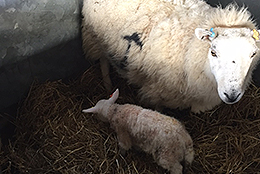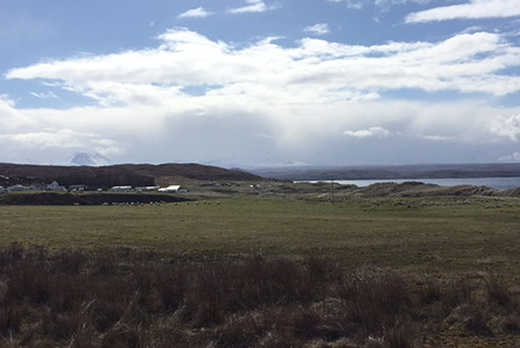 Fiona and the girls have all headed west for a couple of weeks to help out with the lambing over there on Fiona’s family farm. Whilst they are over there they are keeping a daily blog.
Fiona and the girls have all headed west for a couple of weeks to help out with the lambing over there on Fiona’s family farm. Whilst they are over there they are keeping a daily blog.
Aila, Tilly and I headed west from Edinvale Farm yesterday, our destination? Gairloch in Wester Ross. The journey across was pretty snowy and whilst not unusual for this time of year it’s not what you want to see when we are heading home to help with lambing.
My Dad has 160 North Country Cheviot ewes which lamb every April. They are a hardy breed of sheep, well used to the rough ground on the west. They live outdoors all year on the hill mainly. At lambing they are brought in to an in-bye field to enable us to keep a closer check on things.
By the time we arrived there had already been a few lambs born. My brother had to assist a ewe lambing as the lamb had a leg back – luckily the lamb survived, it may have been a different story if my brother hadn’t intervened.
This morning Dad was out first thing, the ground was covered in snow so he went out fearful of what he may find. If lambs don’t manage to get up quickly after birth and get the vital first suck of colostrum (rich, first milk produced with all the nutrients needed for a newborn lamb) from the mother the cold weather can be fatal.
He returned, having found 1 lamb dead probably due to it been weak at birth and not sucking. Another which hadn’t got the vital first milk and was struggling – Dad brought the lamb and ewe in to the shed where it would be warm and dry. The lamb was too weak to suck so it was tube fed (a tube pushed through its mouth directly down to its stomach) and left with its mother in the hope that it was caught in time.
Sadly, when we returned after breakfast the lamb had died. However, there were 2 sets of twins born this morning which meant we had lambs to foster on to the 2 ewes who had lost their lambs.
The morning check was spent marking all the new lambs – we take a note of the mothers tag number, the date of birth of the lamb, the sex, weight and the tag number given to the lamb. We marked both sets of twins. We took 1 of each twin back into the shed.
Dad, very skilfully, skins the dead lambs, which creates a jacket that can be put on the foster lamb. He rubs the skin over the lamb before putting this ‘jacket’ on the lamb. The reason for this is to trick the ewe into thinking that it is her lamb – she recognises her lamb by smell so if we can make the live lamb smell like her dead one she should accept it as her own. You will see in the picture the lamb with jacket – it looks a little dirty! It makes for a happy ewe and happy lamb!
The afternoon we go round the sheep again and marked more lambs. We had to catch one ewe as we thought the lamb hadn’t sucked just to make sure it got a good drink this helps a lamb survive in the hours after it’s born. We had another similar ewe that we caught, the lamb was a little older but weak (from lack of milk) so took that ewe and lamb into the sheep pen where we can keep a closer eye on it and give the mother a bit more food to build up a better milk supply.

